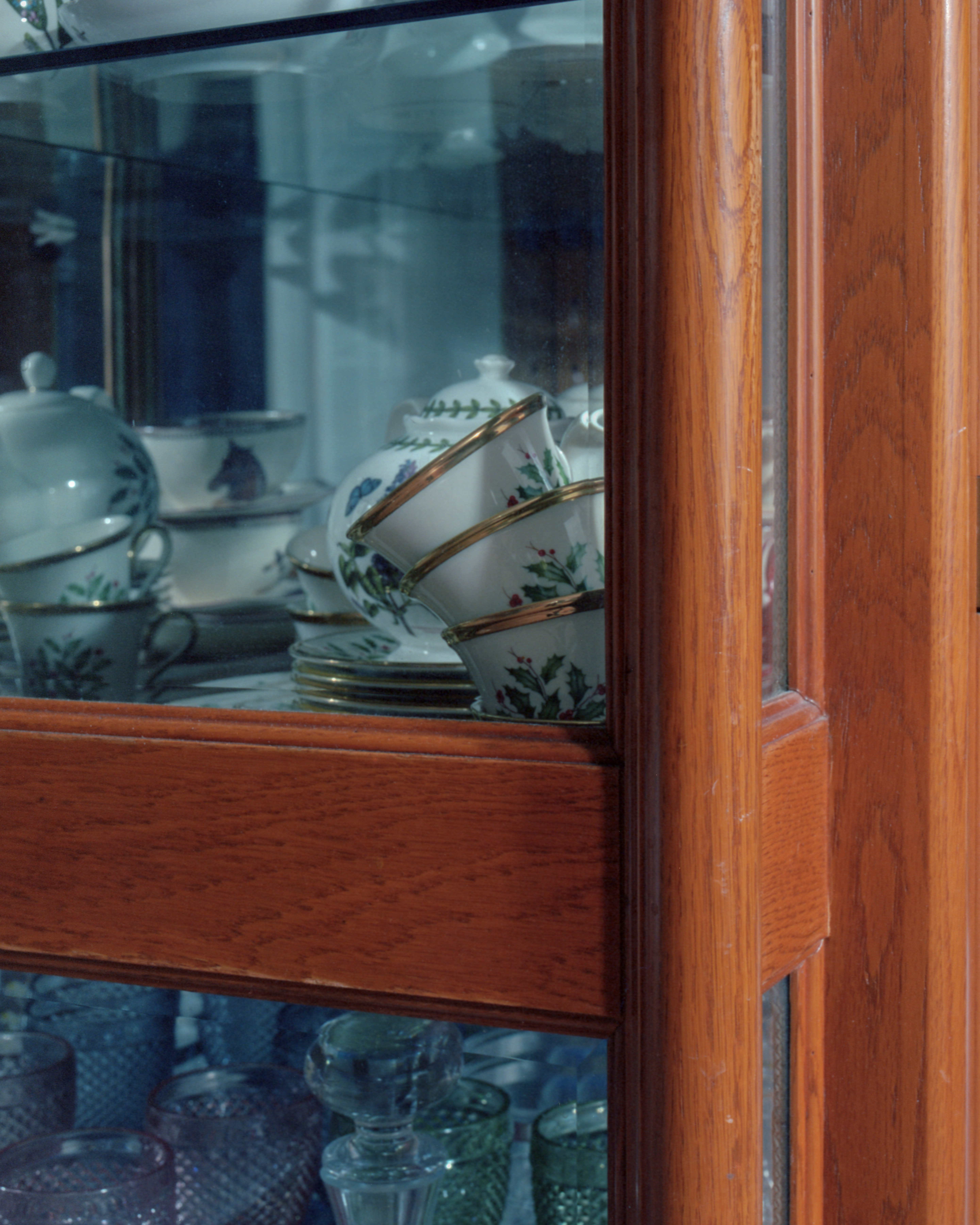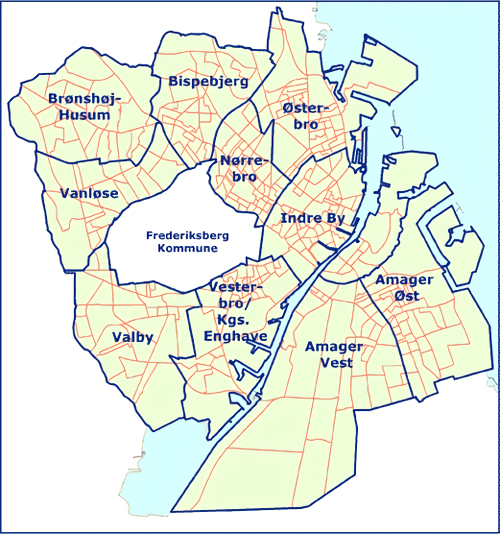|
Arbejdernes Byggeforening
Arbejdernes Byggeforening ( lit. "The Workers' Building Society") was a Danish building society founded in Copenhagen in 1865 to provide healthy homes for the city's workers, especially those from the Burmeister & Wain factory. At the time of its foundation, the society had just 200 members but it grew fast, reaching 16,000 in 1890, and peaking at 26,342 members in 1955. The society built a total of almost 1,500 terraced houses at various sites around the city, including Kartoffelrækkerne in Østerbro and Humleby in Vesterbro, before it was dissolved in 1972. History Background The idea of providing good and healthy homes for the poorest part of the city's workforce originated among local politicians and medical doctors during the 1853 Copenhagen cholera outbreak which killed approximately 5,000 citizens. A major reason for the outbreak was the dismal conditions in the poorest parts of the city which suffered from overpopulation and lack of proper sanitary facilities. The Danis ... [...More Info...] [...Related Items...] OR: [Wikipedia] [Google] [Baidu] |
Literal Translation
Literal translation, direct translation or word-for-word translation, is a translation of a text done by translating each word separately, without looking at how the words are used together in a phrase or sentence. In Translation studies, translation theory, another term for "literal translation" is ''metaphrase'' (as opposed to ''paraphrase'' for an Analogy, analogous translation). Literal translation leads to mistranslating of idioms, which is a serious problem for machine translation. The term as used in translation studies Usage The term "literal translation" often appeared in the titles of 19th-century English language, English translations of classical, Bible and other texts. Cribs Word-for-word translations ("cribs," "ponies" or "trots") are sometimes prepared for a writer who is translating a work written in a language they do not know. For example, Robert Pinsky is reported to have used a literal translation in preparing his translation of Dante's ''Inferno (Dante), I ... [...More Info...] [...Related Items...] OR: [Wikipedia] [Google] [Baidu] |
Former Building Societies Of Denmark
A former is an object, such as a template, gauge or cutting die, which is used to form something such as a boat's hull. Typically, a former gives shape to a structure that may have complex curvature. A former may become an integral part of the finished structure, as in an aircraft fuselage, or it may be removable, being using in the construction process and then discarded or re-used. Aircraft formers Formers are used in the construction of aircraft fuselage, of which a typical fuselage has a series from the nose to the empennage, typically perpendicular to the longitudinal axis of the aircraft. The primary purpose of formers is to establish the shape of the fuselage and reduce the column length of stringers to prevent instability. Formers are typically attached to longerons, which support the skin of the aircraft. The "former-and-longeron" technique (also called stations and stringers) was adopted from boat construction, and was typical of light aircraft built until the ad ... [...More Info...] [...Related Items...] OR: [Wikipedia] [Google] [Baidu] |
Cupboard
A cupboard is a piece of furniture for enclosing dishware or grocery items that are stored in a home. The term gradually evolved from its original meaning: an open-shelved side table for displaying dishware, more specifically plates, cups and saucers. These open cupboards typically had between one and three display tiers, and at the time, a drawer or multiple drawers fitted to them.Andrews, John (2006) ''British Antique Furniture''. Antique Collectors' Club ; p. 226 Types of cupboards Airing cupboard An airing cupboard (or hot press) is a built-in storage space, sometimes of walk-in dimensions, containing a water heater, either an immersion heater for hot running water or a boiler for central heating water (hence, also "boiler cupboard"), or a hot water storage tank. Shelves, usually slatted to allow for circulation of heat, are positioned above or around the heater to provide room for clothing. The purpose is to allow air to circulate around the stored fabrics to prevent damp ... [...More Info...] [...Related Items...] OR: [Wikipedia] [Google] [Baidu] |
Romantic Nationalism
Romantic nationalism (also national romanticism, organic nationalism, identity nationalism) is the form of nationalism in which the state claims its political legitimacy as an organic consequence of the unity of those it governs. This includes such factors as language, race, ethnicity, culture, religion, and customs of the nation in its primal sense of those who were born within its culture. It can be applied to ethnic nationalism as well as civic nationalism. Romantic nationalism arose in reaction to dynastic or imperial hegemony, which assessed the legitimacy of the state from the top down, emanating from a monarch or other authority, which justified its existence. Such downward-radiating power might ultimately derive from a god or gods (see the divine right of kings and the Mandate of Heaven). Among the key themes of Romanticism, and its most enduring legacy, the cultural assertions of romantic nationalism have also been central in post-Enlightenment art and political phi ... [...More Info...] [...Related Items...] OR: [Wikipedia] [Google] [Baidu] |
Savings Bank
A savings bank is a financial institution whose primary purpose is accepting savings account, savings deposits and paying interest on those deposits. History of banking, They originated in Europe during the 18th century with the aim of providing access to Wealth, savings products to all levels in the population. Often associated with social good, these early banks were often designed to encourage low-income people to Saving, save money and have access to banking services. They were set up by governments or by socially committed groups or organisations such as with credit unions. The structure and legislation took many different forms in different countries over the 20th century. Savings banks and Savings and loan association, savings-and-loans are often confused. The original function of savings banks to service consumers was limited to savings. Savings banks invested in Government debt, government and Corporate bond, corporate debt. Savings and loan associations had a dual p ... [...More Info...] [...Related Items...] OR: [Wikipedia] [Google] [Baidu] |
Nyboder
Nyboder (English: New mallHouses) is a historic row house district of former Naval barracks in Copenhagen, Denmark. It was planned and first built by Christian IV to accommodate a need for housing for the personnel of the rapidly growing Royal Danish Navy and their families during that time. While the area is still commonly associated with the name of its founder as one of his numerous building projects around Copenhagen, the Nyboder seen today was in fact, except for a single row of houses in St. Paulsgade, built from 1757. Nyboder is today very much associated with their yellow colour and "Nyboder yellow" is in Danish often used as a generic term to refer to their exact hue of yellow. However, the original colour of the development was red and white. History Christian IV's Nyboder Under Christian IV the Royal Danish Navy grew rapidly and there was an urgent need for suitable accommodation for its personnel and their families. Bremerholm already offered similar housing for na ... [...More Info...] [...Related Items...] OR: [Wikipedia] [Google] [Baidu] |
Gammel Kongevej
Gammel Kongevej (literally "Old King's Road) is the principal shopping street of Frederiksberg in Copenhagen, Denmark. Running roughly parallel to Frederiksberg Allé and Vesterbrogade, it extends from Vesterport station at the southern end of The Lakes and continues for some 1.8 km west to Frederiksberg City Hall Square where it continues as Smallegade. In the opposite end, Jernbanegade connects it to Copenhagen City Hall Square. History 17th and 18th century Gammel Kongevej is one of the oldest road sections in Frederiksberg, originally providing a direct connection between Copenhagen's Western City Gate and the historic village of Solbjerg (no longer in existence). From there the road continued past the Damhus Lake towards Roskilde, giving rise to the name Roskildegaden ("The Roskilde Street"), which is seen in some documents from the beginning of the 17th century. The road was improved by Christian IV in the 1620s. The name Kongevejen (English: King's Road) emerged ... [...More Info...] [...Related Items...] OR: [Wikipedia] [Google] [Baidu] |
Amager
Amager ( or, especially among older speakers, ) in the Øresund is Denmark's most densely populated island, with more than 212,000 inhabitants (January 2021) a small appendage to Zealand. The protected natural area of ''Naturpark Amager'' (including Kalvebod Fælled) makes up more than one-third of the island's total area of 96 km2. The Danish capital, Copenhagen Municipality, is partly situated on Amager, covering the northern part of the island, which is connected to the much larger island of Zealand by eight bridges and a metro tunnel. Amager also has a connection across the Øresund to Sweden, the Øresund Bridge. Its western part begins with a tunnel from Amager to another Danish island, Peberholm. Copenhagen Airport is located on the island, around from Copenhagen city centre. Amager is the largest island in the Øresund, and the only one with a large population. , 212,661 people lived on the island, including its northern tip, Christianshavn. The northern part is in ... [...More Info...] [...Related Items...] OR: [Wikipedia] [Google] [Baidu] |
Christianshavn
Christianshavn (literally, "ingChristian's Harbour") is a neighbourhood in Copenhagen, Denmark. Part of the Indre By District, it is located on several artificial islands between the islands of Zealand and Amager and separated from the rest of the city centre by the Inner Harbour. It was founded in the early 17th century by Christian IV as part of his extension of the fortifications of Copenhagen. Originally, it was laid out as an independent privileged merchant's town with inspiration from Dutch cities but it was soon incorporated into Copenhagen proper. Dominated by canals, it is the part of Copenhagen with the most nautical atmosphere. For much of the 20th century a working-class neighbourhood, Christianshavn developed a bohemian reputation in the 1970s and it is now a fashionable, diverse and lively part of the city with its own distinctive personality. Businessmen, students, artists, hippies and traditional families with children live side by side. Administratively, Christi ... [...More Info...] [...Related Items...] OR: [Wikipedia] [Google] [Baidu] |
.jpg)






